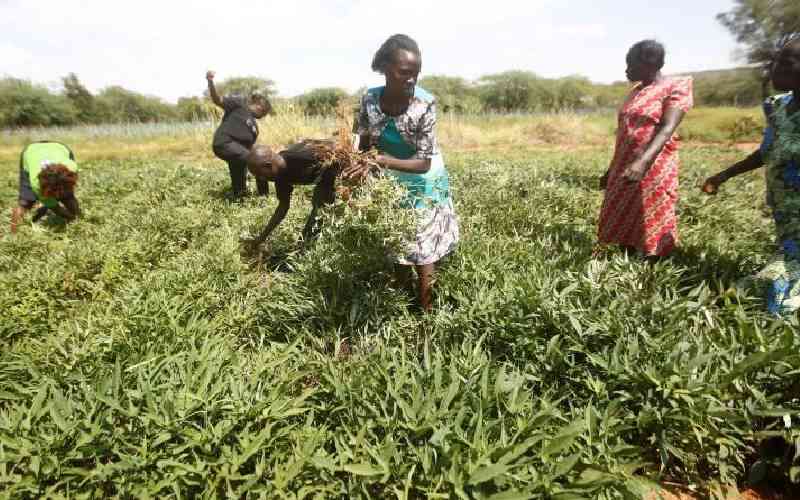The genesis for land tenure reforms in Kenya can be traced to the colonial period, particularly after the publication of J H Ingham report (1950) and the Swynnerton Plan of 1954. These two blueprints persuasively argued for individualisation of tenure as a pre-condition for increased agricultural production throughout the colonial period. In the post-colonial period, the World Bank has remained the leading institution in setting land policy agenda in Kenya and other African countries. Since 1975, the World Bank has put in place two landmark land policy documents namely Land Reform Policy Paper 1975, and Sub-Saharan Africa: From Crisis to Sustainable Growth 1989. These two reports capture the World Bank’s thinking on a range of land issues such as landreforms, land administration, land rights, land markets and how these can play a leading role towards poverty reduction in Africa.
As recently as 2011, the World Bank’s focus and land tenurereforms has continued to be guided by the argument that modern, efficient and transparent land administration systems are important in reducing poverty, promoting growth and sustainable development
Security of property rights is central to preserving livelihoods, maintaining social stability, and increasing incentives for investment and for sustainable, productive land use. Making land rights transferable allows the landless to access landthrough sales and rental markets or through public transfers, and further increases investment incentives. Even with these good prescriptions and experimentations Africa and Kenya for our case is still home to highest recorded poverty rates. In 2013, the World Bank persuasively argued in their latest reports that in Africa, poor land governance – the manner in which land rights are defined and administered – may be the root of the problem.
Empirical research conducted in Kenya and elsewhere in sub-Saharan Africa continues to demonstrate that, by and large, land tenure reforms, particularly land registration, did not realise the theoretical expectations, instead it created greater uncertainty and conflicts. Those on whose names land was registered as principal landholders -- men, assumed exclusive individual rights in given pieces of land at the expense of women, widows and juniors whose rights to land remained either secondary or usufruct. Three scenarios have been evident in western Kenya and may be in the whole country. These include land disputes, land disposition, and rampant land sales for flimsy reasons including establishing a home, payment of mortuary bills, buying a motor bike and exchange of bride wealth. These have been significantly exacerbated by the high prevalence of HIV and Aids resulting into orphans and young widows with limited knowledge about land rights.
Our cultures, particularly among the Luo, which require adult men to establish a homestead (dala) has not made things better. The culture requires that when the sons in the homestead mature, they also build their own huts (simba). This culture among communities in western Kenya has led to excessive fragmentation of agricultural land into uneconomical units. Probably time has come for a cultural dialogue and a national consensus on land use patterns with a view to coming up with enforceable land policy with the potential of prohibiting uneconomical land subdivision.
We need to stop this madness to effectively address poverty. The Draft National Land Policy sought to address landproblems. However, the major arguments advanced in the draft policy did not have any real departure from the past. Kenya must chart her land reform agenda that addresses development challenges including poverty eradication.
- The writer is a Senior Lecturer at Jaramogi Oginga Odinga University of Science and Technology.
 The Standard Group Plc is a
multi-media organization with investments in media platforms spanning newspaper
print operations, television, radio broadcasting, digital and online services. The
Standard Group is recognized as a leading multi-media house in Kenya with a key
influence in matters of national and international interest.
The Standard Group Plc is a
multi-media organization with investments in media platforms spanning newspaper
print operations, television, radio broadcasting, digital and online services. The
Standard Group is recognized as a leading multi-media house in Kenya with a key
influence in matters of national and international interest.
 The Standard Group Plc is a
multi-media organization with investments in media platforms spanning newspaper
print operations, television, radio broadcasting, digital and online services. The
Standard Group is recognized as a leading multi-media house in Kenya with a key
influence in matters of national and international interest.
The Standard Group Plc is a
multi-media organization with investments in media platforms spanning newspaper
print operations, television, radio broadcasting, digital and online services. The
Standard Group is recognized as a leading multi-media house in Kenya with a key
influence in matters of national and international interest.








